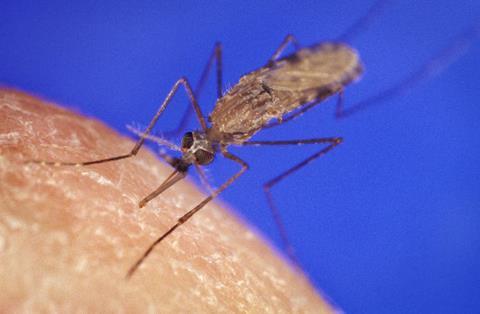Every year, around 600,000 people die from malaria, a mosquito-borne disease – most of them in sub-Saharan Africa, and children are the most vulnerable. This makes malaria one of the deadliest infectious diseases globally.

A new study from the University of Copenhagen, published in Global Change Biology, shows that future climate change could create more favourable conditions for malaria mosquitoes, exposing millions of people across large parts of Africa to more dangerous mosquito bites.
“Our study indicates that climate change will benefit these malaria mosquitoes. This could put between 200 million and up to one billion people at additional risk – unless we act,” says lead author Tiem van der Deure, a PhD student at the Department of Veterinary and Animal Sciences at the University of Copenhagen.
“The 200 million figure is a very conservative estimate assuming no demographic changes, but accounting for climate change. The one billion scenario includes significant population growth,” he explains.
Severe consequences
If new areas become exposed to malaria, the consequences could be severe, as populations in these regions will lack experience in managing the disease and have very low immunity.
Because malaria is such a major problem in Africa, researchers have long studied how climate change affects the parasites mosquitoes transmit to humans. While climate change influences malaria in many ways – making the overall picture complex – this study shows that future climate conditions could favour several mosquito species capable of carrying malaria across much of Africa.
The researchers examined how six of the most widespread malaria mosquito species will respond to climate change.
“To most people, mosquitoes look alike. But they differ greatly – even if we sometimes can’t tell them apart with the naked eye. Their behaviour and preferred environments vary significantly,” says Associate Professor Anna-Sofie Stensgaard from the Department of Veterinary and Animal Sciences at the University of Copenhagen and senior author of the study.
Insect algorithms
The team trained algorithms on thousands of mosquito observations and then used these models to predict where climate conditions will be suitable for different species – and how these conditions will shift as the climate changes.
“Of the six species we studied, three are projected to expand, while the other three do not decline significantly. Overall, this is a worrying trend,” says Tiem van der Deure.
Mosquito habitats are expected to grow especially in East and Central Africa, while conditions in West Africa will remain favourable.
Action is possible
Despite the grim outlook, something can be done, stresses Tiem van der Deure:
“Our climate scenarios show that we can prevent much of this by limiting climate change. We examined one scenario where we continue as usual, and another where we meet the Paris Agreement targets,” he says.
“This study is a stark reminder that failing to meet the Paris Agreement targets is not just about rising seas or extreme weather – it’s also a public health crisis in the making,” adds Professor David Nogués Bravo from the Center for Macroecology, Evolution and Climate at the University of Copenhagen and co-author of the study.
Northern Europe
According to the study, global health authorities must prepare for malaria to spread. With climate change, we can no longer assume mosquitoes will stay where they are, which could lead to outbreaks in new regions.
READ MORE: Warmer Nordic springs double the incidence of avian malaria
READ MORE: Vaccination could mitigate climate-driven disruptions to malaria control
Even though Northern Europe is also getting warmer, there is no need for concern there, emphasizes Anna-Sofie Stensgaard: “Malaria existed in Denmark in the past when the climate was much colder, and we still have malaria mosquitoes. But it remains too cold for the parasite to thrive. So malaria is not one of the mosquito-borne diseases I worry about reaching Denmark anytime soon. It’s also important to note that climate change is only part of the explanation for shifting disease patterns. Globalization, international trade, and land-use changes play at least as big a role,” she says.
According to Denmark’s Statens Serum Institut, around 80–100 malaria cases are imported to Denmark each year.







No comments yet